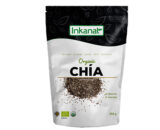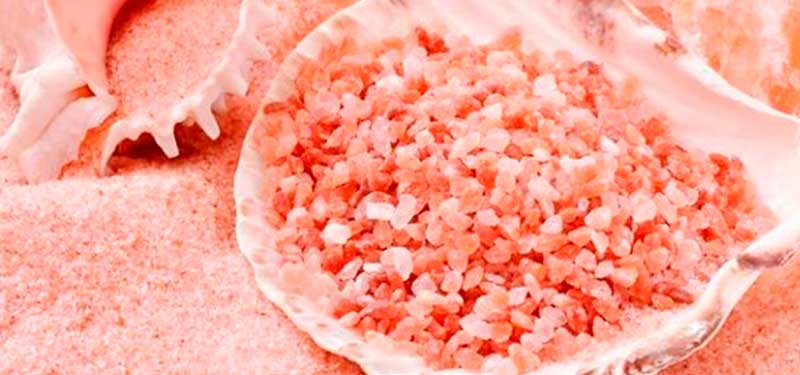Subtotal: S/. 52,00
Get out of the Andes
“The Salt of the Andes provides, not only sodium chloride as common salt, but also various minerals, in greater quantity than sea salt which are important for the body, and are present in its natural constitution such as magnesium , iron, zinc and copper. ”
Benefits of Salt from the Andes
The main benefit of the Salt of the Andes is the presence in its appreciable composition of minerals. It is known that both water and other mineral substances are contained in food; but when the proportion is insufficient it is necessary to take them apart to complement them, since we have seen the importance of these for the body and the complications that their deficit would have, if we do not administer what is necessary in our diets.
Therefore, the Salt of the Andes provides, not only sodium chloride as common salt, but also various minerals, many of which are most important for the body, in addition to being present in its natural constitution, making it much higher than others, such as sea salt.
Composition and Importance of the minerals present in Andean Salt
Minerals in a higher percentage than other types of salt:
– Calcium (457.89 / 100mg) Regulates the heart rate It is involved in the transmission of nerve impulses. It takes part in the contraction of the muscles. Maintains healthy bones and teeth. Allows proper blood clotting. It is essential for cell function. It favors the functioning of the immune system. It is essential for the proper functioning of the respiratory system.
– Iron (3.98 / 100mg) It is essential for the transport of oxygen through the blood to the tissues. It is, together with chromium, a protein transporter element. It is part of the structure of an enzyme, catalase, which defends us against free radicals.
It is necessary for the metabolization of B vitamins. It has been suggested that iron supplements administered when there is a deficiency of this mineral can improve the brain function of adolescent girls by increasing their capacity for learning and memory.
– Magnesium (11.5 / 100 mg.) Important catalyst for many intracellular enzymatic reactions, particularly those related to carbohydrate metabolism.
– Zinc (0.28 / 100 mg.) Participates in protein and collagen synthesis. Helps heal wounds. Strengthens the body’s defenses. It is a powerful antioxidant. Adequate growth and development during pregnancy, childhood and adolescence depend on its presence. Maintains the senses of taste and smell. Protect the eyes.
– Copper (0.13 / 100 mg.) Indispensable for the formation of hemoglobin. It allows the amino acid tyrosine to be used as a pigmentation factor for hair and skin.
It is essential for the use of vitamin C. Present in the synthesis of certain essential substances in the formation of protective myelin sheaths that surround nerve fibers. Participate in the formation and maintenance of bones. It is involved in the formation of RNA. Avoid excessive blood clotting. Collaborates in the proper functioning of the thyroid gland. Participates in the optimal maintenance of cholesterol levels.
Minerals in a lower percentage than other types of salt:
– Sodium (12.49 / 100 mg.)
The Salt of the Andes – Maras through History
Maras, is a district of the Urubamba province belonging to Cuzco, (at 3300 m.a.s.l. it is located on a plain that in prehistoric times was a great plateau).
In this town, for more than 250 million years, Andean salt has been produced naturally in the famous salt mines. The Maras salt mines known to some as “salt mines” are made up of about 3,000 small wells with an average area of about 5 m². Formed from evaporation residues that are photonically enriched by the effect of the sun, and let us remember that the Incas of Peru worshiped the sun, it is that they knew very well that adding Andean salt to their food gave them more benefits and these have given good results. in the organic development of the ancient Inca settlers, for this reason they used these ancient customs that persist to this day.
This energetic and mineral enrichment of the salt of the Andes was known very well by the Incas, which is why they used this salt in their food.
Important note:
There are many contraindications to the consumption of salt in the diet, since its excess produces various health problems, but none of that happens with our surprising SALT OF THE ANDES that, as we have described above, contains those minerals such as sodium and chloride sodium, in low percentages, that is why it is the salt of choice to improve and give energy to our body as the Incas of Peru did.
Some of the problems that may occur are: Excess Sodium Chloride,
It can cause accumulation or retention of fluids in the body, on the other hand Sodium reacts with Ac. Uric forming salts (urates) that accumulate in the joints causing inflammation and pain. This generally occurs with other types of salt because they contain very high concentrations of this component or other substances that are added to common table salt that is refined and to make it less hygroscopic (which absorbs less moisture from the environment).
The percentage of Sodium and Sodium Chloride present in the other salts can cause an increase in blood pressure, this is because the volume of the extracellular fluid is directly related to the degree of accumulation of salt in the body. There are two basic reasons:
1.- When there is excess salt in the body, the osmolality of the body fluids increases, which in turn stimulates the thirst center and makes the person drink extra amounts of water to dilute the extracellular salt to the normal concentration . This manifestly increases the volume of the extracellular fluid.
2.- The increase in the osmolality of the extracellular fluid stimulates the secretory mechanism of the hypothalamus and posterior pituitary so that it secretes greater amounts of antidiuretic hormone. In turn, antidiuretic hormone causes the kidney to reabsorb greatly increased amounts of water from urine prior to urine secretion, thereby decreasing the volume of urine while increasing the volume of extracellular fluid.
For these two important reasons, the amount of salt that accumulates in the body is the main determining factor of the volume of the extracellular fluid, which in addition, only small increases in these are enough to considerably raise blood pressure.







